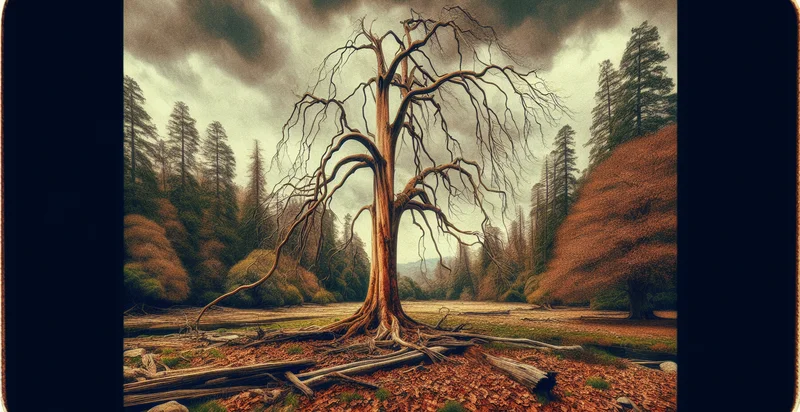Identify if a tree is dying
using AI
Below is a free classifier to identify if a tree is dying. Just upload your image, and our AI will predict if a tree is dying - in just seconds.

Contact us for API access
Or, use Nyckel to build highly-accurate custom classifiers in just minutes. No PhD required.
Get started
import nyckel
credentials = nyckel.Credentials("YOUR_CLIENT_ID", "YOUR_CLIENT_SECRET")
nyckel.invoke("if-a-tree-is-dying", "your_image_url", credentials)
fetch('https://www.nyckel.com/v1/functions/if-a-tree-is-dying/invoke', {
method: 'POST',
headers: {
'Authorization': 'Bearer ' + 'YOUR_BEARER_TOKEN',
'Content-Type': 'application/json',
},
body: JSON.stringify(
{"data": "your_image_url"}
)
})
.then(response => response.json())
.then(data => console.log(data));
curl -X POST \
-H "Content-Type: application/json" \
-H "Authorization: Bearer YOUR_BEARER_TOKEN" \
-d '{"data": "your_image_url"}' \
https://www.nyckel.com/v1/functions/if-a-tree-is-dying/invoke
How this classifier works
To start, upload your image. Our AI tool will then predict if a tree is dying.
This pretrained image model uses a Nyckel-created dataset and has 2 labels, including Dying Tree and Healthy Tree.
We'll also show a confidence score (the higher the number, the more confident the AI model is around if a tree is dying).
Whether you're just curious or building if a tree is dying detection into your application, we hope our classifier proves helpful.
Related Classifiers
Need to identify if a tree is dying at scale?
Get API or Zapier access to this classifier for free. It's perfect for:
- Urban Forestry Management: Municipalities can use the identifier to monitor the health of trees in urban areas. By identifying dying trees early, city planners can prioritize maintenance and replacement efforts, improving urban biodiversity and reducing risks from falling branches.
- Insurance Assessment: Insurance companies can deploy the identifier for evaluating claims related to property damage caused by fallen trees. By accurately identifying dying trees, insurers can determine liability and expedite claims processing, leading to enhanced customer satisfaction.
- Environmental Conservation: Non-profit organizations focused on reforestation and conservation can use this tool to assess forest health. By pinpointing dying trees, they can allocate resources more effectively for interventions, increasing the success rate of conservation efforts.
- Pest and Disease Monitoring: Agricultural and forestry businesses can utilize the identifier to detect pest infestations and disease spread among trees. By identifying affected specimens, they can implement targeted treatment strategies, thereby safeguarding their timber resources and reducing economic losses.
- Landscape Maintenance Services: Landscape maintenance companies can adopt the identifier as part of their tree care services. This tool enables timely detection and communication with clients regarding tree health, leading to enhanced service offerings and improved customer relationships.
- Wildfire Risk Assessment: Fire management agencies can use the identifier to locate and assess trees that are dying due to drought or disease, which increases the risk of wildfires. By managing these trees proactively, agencies can lower wildfire hazards and improve community safety.
- Climate Change Research: Academic institutions and environmental researchers can use the identifier to study the impacts of climate change on tree health. This data can contribute to larger ecological studies and models, providing insights into forest ecosystems and guiding future conservation strategies.


